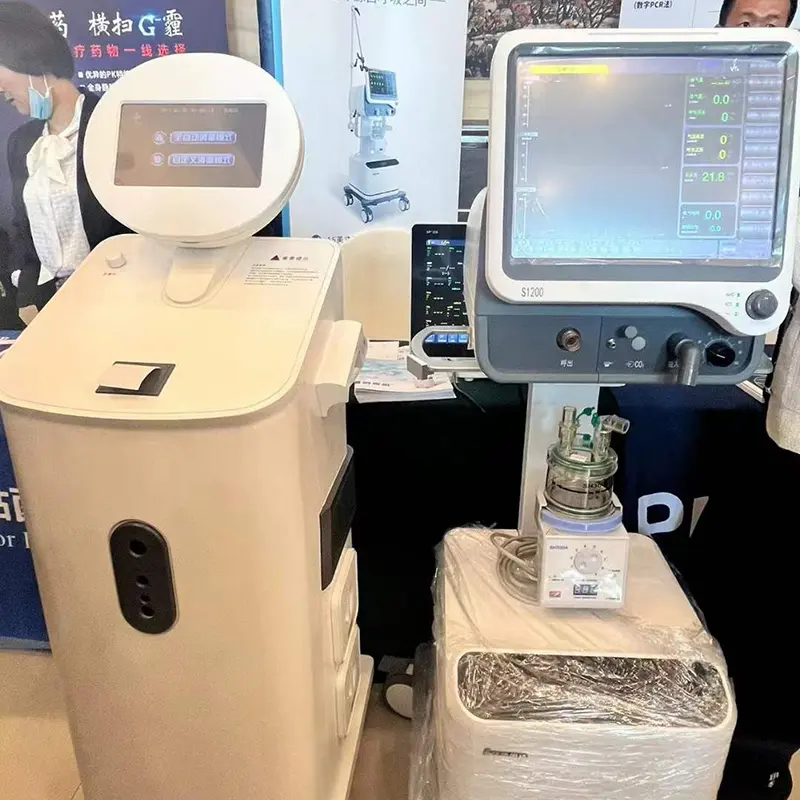Introducing
Ensuring Sterility and Patient Safety in Medical Procedures
Anesthesia machine pipeline disinfection is a critical process in medical facilities, aimed at maintaining the highest level of sterility during anesthesia administration. With its advanced technology and meticulous disinfection capabilities, this process plays a pivotal role in enhancing patient safety and reducing the risk of healthcare-associated infections. By effectively removing potentially harmful pathogens and contaminants from the anesthesia machine pipelines, healthcare professionals can provide a safe and sterile environment during critical procedures.
Thorough Disinfection Process:
Anesthesia machine pipeline disinfection employs a comprehensive and systematic process to ensure optimal sterility. Specialized disinfectants or cleaning agents, specifically formulated to target various microorganisms, are used for thorough disinfection. These disinfectants are carefully introduced into the anesthesia machine pipelines through a controlled process, allowing them to come into contact with all internal surfaces and effectively eliminate any potential sources of contamination.
Compliance with Industry Standards:
Anesthesia machine pipeline disinfection procedures adhere to strict guidelines and standards set by regulatory authorities and professional organizations. These guidelines ensure consistency, effectiveness, and the highest level of patient safety. Healthcare professionals meticulously follow these guidelines to maintain a sterile environment and reduce the risk of cross-contamination, emphasizing the importance of regular, routine disinfection of anesthesia machine pipelines.
Advanced Disinfection Agents:
The disinfectants used in anesthesia machine pipeline disinfection are specifically designed to target a wide range of microorganisms, including bacteria, viruses, and fungi. These agents possess potent antimicrobial properties and are formulated to effectively eliminate potential sources of infection. The selection of disinfection agents is based on their ability to provide broad-spectrum disinfection while ensuring compatibility with the materials used in anesthesia machine pipelines.
Meticulous Cleaning and Sterilization:
Before the disinfection process, thorough cleaning is performed to remove any visible debris, biological material, or residue present in the anesthesia machine pipelines. This cleaning process creates an optimal environment for effective disinfection, ensuring that the disinfectants come into direct contact with the target surfaces. Following cleaning, sterilization techniques are employed to eliminate microorganisms, ensuring a high level of sterility and safety.
Regular Maintenance and Monitoring:
Apart from routine disinfection procedures, anesthesia machine pipelines require regular maintenance and monitoring. Regular inspections and checks are performed to identify any potential issues or areas that may require attention. Healthcare professionals conduct comprehensive assessments to ensure the proper functioning of the anesthesia machine pipelines, reducing the risk of contamination or malfunction during critical medical procedures.
Qualified Healthcare Professionals:
Anesthesia machine pipeline disinfection is carried out by qualified healthcare professionals who possess the necessary expertise and knowledge to perform the task accurately. These professionals have undergone rigorous training and possess a deep understanding of the specific disinfection protocols and techniques required to maintain a sterile pipeline system. Their expertise ensures that the disinfection process is conducted efficiently and adheres to the highest standards of sterility and safety.
Enhancing Patient Safety:
Anesthesia machine pipeline disinfection is a critical practice in ensuring patient safety during medical procedures. By effectively removing potentially harmful microorganisms, the risk of infections and complications is significantly reduced, providing a safer environment for patients. In critical procedures like surgeries or anesthesia administration, maintaining a sterile space is paramount to prevent the transmission of healthcare-associated infections and promote positive patient outcomes.
Conclusion:
Anesthesia machine pipeline disinfection is an essential process that upholds the highest standards of sterility and patient safety during medical procedures. Through its thorough disinfection methods, compliance with industry standards, and the expertise of qualified healthcare professionals, the internal pipelines of anesthesia machines can be effectively sterilized, mitigating the risk of infections and complications. Regular disinfection, along with ongoing maintenance and monitoring, helps to ensure the smooth operation of the machine and provides healthcare professionals and patients with confidence and peace of mind. Embrace anesthesia machine pipeline disinfection and prioritize the highest standards of sterility and patient care in medical procedures.
